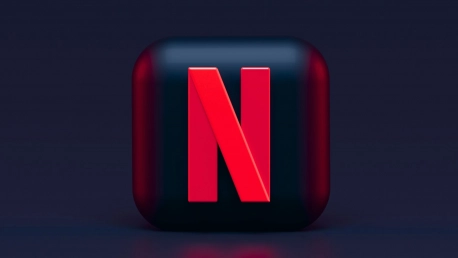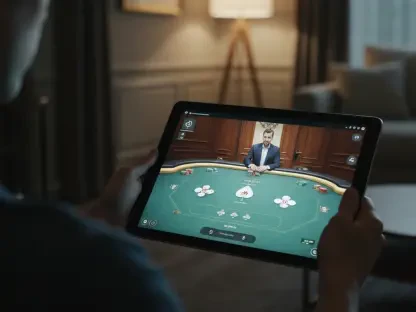The world of virtual reality (VR) is constantly evolving, and the shift from a dedicated Netflix VR app to browser-based streaming on the Meta Quest platform is a prime example. This transition reflects broader trends in technology and media consumption, bringing both enhancements and challenges for users. Understanding the reasons behind this move and its implications can provide valuable insights into the future direction of VR entertainment.
Historical Development of Netflix VR App
Early Beginnings and Growth
The Netflix VR app started its journey back in 2015 when it was initially developed by John Carmack for the Samsung Gear VR. The aim was to offer users a unique cinematic experience in a virtual space, combining two rapidly growing fields—virtual reality and streaming services. From the outset, the concept was compelling, promising to transform the way people consumed media by placing them into a virtual theater of sorts. This innovative approach garnered significant attention and set the stage for VR as an exciting new frontier in media consumption.As the Netflix VR app began to gain traction, its success prompted developers to expand its reach. However, despite its initial popularity and the buzz it generated, the app did not undergo significant technological updates after its launch. This stagnation eventually led to the app feeling outdated compared to other media streaming options available. Yet, the early enthusiasm and foundational work laid the groundwork for what would come next in the evolution of VR streaming experiences.
Expansion to Oculus Devices
Following its initial release, the Netflix VR app was ported to the Oculus Go and the original Oculus Quest. These moves were part of a broader strategy to provide a consistent VR experience across multiple platforms. By extending compatibility to various devices, Netflix aimed to cater to a broader audience and integrate its services into the burgeoning VR market. The ports to Oculus devices expanded the app’s reach and allowed more users to enjoy its offerings, further solidifying Netflix’s position in this nascent space.Despite the strategic expansion, the app’s potential was held back by its lack of significant technological advancements. The core technology remained largely unchanged from its original 2015 development, missing out on the rapid advancements occurring in VR and streaming technologies. Consequently, users started to notice the app’s deficiencies, leading to a gradual decline in its appeal. As newer and more advanced VR experiences became available, the limitations of the Netflix VR app became more glaring, setting the stage for the inevitable transition to a more modern solution.
Technical Limitations and Outdated Features
Resolution and Performance Constraints
One of the primary criticisms of the Netflix VR app was its 480p resolution cap. At a time when high-definition content is the norm, this low resolution made the app feel outdated and less appealing. Users accustomed to high-quality streaming found the VR app’s visuals subpar, which detracted from the immersive experience VR aims to provide. While VR technology had advanced significantly, the Netflix VR app seemed trapped in a bygone era, unable to leverage the improvements in graphics and processing power that contemporary headsets offered.Additionally, performance issues such as buffering and limited content interaction further hindered the app’s user experience. The software struggled with smooth playback, leading to frequent interruptions and a generally frustrating viewing experience. Such shortcomings not only diminished the app’s usability but also failed to meet the quality standards that Netflix users had come to expect. The cumulative effect of these issues made it clear that the app was out of sync with the advancements shaping both the VR landscape and streaming technology.
Missing Functionalities
The app lacked key features such as content downloads for offline viewing and passthrough support, which are increasingly expected by users. Without these functionalities, the app struggled to meet modern standards and user expectations, contributing to its obsolescence. Offline viewing, in particular, is a much-desired feature for individuals who need access to content without relying on constant internet connectivity—such as travelers or those living in areas with poor Wi-Fi service. The absence of this feature significantly limited the app’s utility and versatility.Passthrough support, another critical feature missing from the Netflix VR app, allows users to see their physical surroundings even while engaged in a virtual experience. This functionality enhances safety and convenience, making it easier for users to navigate their environment without having to remove their headsets. Its absence was another factor that rendered the VR app less competitive compared to other tech-savvy solutions available in the market. Collectively, these missing features underscored the app’s inability to evolve and adapt, ultimately leading to its replacement by a more modern and capable solution.
Transition to Browser-Based Streaming
Enhanced Capabilities of Quest’s Browser
With the introduction of Netflix streaming via the Meta Quest’s web browser, users now enjoy up to 1080p resolution, a significant improvement over the VR app. This transition leverages the robust capabilities of modern web browsers, which provide better streaming quality and additional functionalities like passthrough and multitasking. By utilizing the web browser, Netflix can offer a more dynamic and enriched viewing experience that takes full advantage of the technological advancements in VR headsets.The browser-based approach not only improves visual fidelity but also enhances overall performance. Users can expect smoother playback with fewer interruptions, elevating the standard of media consumption in virtual environments. Furthermore, the web browser’s inherent flexibility allows for quicker updates and feature rollouts, ensuring that the streaming experience remains contemporary and aligned with evolving user needs. This significant leap in capabilities marks a substantial improvement over the dated and stagnant dedicated app.
User Experience Improvements
The web browser offers a more user-friendly and versatile experience compared to the dedicated app. Users can seamlessly switch between VR content and other online activities, making the virtual environment more engaging and interactive. Multitasking is particularly valuable in a VR setup, where users might want to explore different content or applications without the need to constantly switch contexts. This fluidity enhances convenience and opens up new possibilities for productivity and entertainment within the VR ecosystem.Despite these advancements, some users miss the simplicity and dedicated nature of the standalone app. While the browser-based approach offers numerous benefits, it also introduces complexity that may not appeal to everyone. The transition requires users to adapt to a new way of accessing and interacting with Netflix content, which can be a hurdle for those who preferred the straightforward interface of the VR app. However, as users become more accustomed to the browser’s capabilities, the overall experience promises to be more rewarding and aligned with modern expectations.
Challenges and Areas for Improvement
Lack of Offline Viewing
One major drawback of the new browser-based approach is the inability to download Netflix content for offline viewing without sideloading the Android app. This limitation is significant for users who require offline access, such as travelers or those in areas with weak internet connectivity. The convenience of offline viewing cannot be overstated, as it allows users to enjoy their favorite shows and movies without worrying about buffering or connectivity issues. This is particularly important for individuals who are frequently on the go or live in regions where stable internet is a luxury rather than a given.The absence of this feature puts the browser-based solution at a disadvantage compared to other streaming platforms that offer more comprehensive offline capabilities. Users accustomed to such flexibility may find the transition to browser-based streaming less appealing, highlighting the need for continued improvements to bridge this gap. Addressing offline viewing is essential for providing a well-rounded and satisfying user experience, ensuring that Netflix remains competitive in the diverse landscape of VR media consumption.
User Adaptation and Feedback
As users transition from the VR app to browser-based streaming, feedback indicates a mixed reception. While many appreciate the higher resolution and enhanced browser functionalities, others find the process cumbersome and miss the focused environment of the dedicated VR app. The shift to a browser-based model requires users to adapt to new workflows and interfaces, which can be a source of frustration for those who prefer straightforward, single-purpose applications. This feedback underscores the importance of user-centric design and the need for iterative improvements based on real-world usage and preferences.Feedback will be crucial for guiding future updates and enhancing the overall experience of Netflix in VR environments. Continuous engagement with the user community can provide invaluable insights into what features are most desired and where pain points exist. By prioritizing these user-driven insights, Netflix and Meta can work together to refine the browser-based solution, ensuring that it meets the high standards and diverse needs of its audience. In doing so, they can transform initial skepticism into long-term user satisfaction, solidifying the platform’s place in the VR ecosystem.
Comparative Analysis with Other Platforms
Status on Apple Vision Pro
On the Apple Vision Pro platform, Netflix is also available only via web browsers, highlighting a similar industry trend. However, the platform’s capabilities and support for streaming services vary, offering users a different set of advantages and challenges. Apple Vision Pro’s focus on delivering seamless, high-quality multimedia experiences aligns with this browser-based approach, suggesting that industry leaders view web browsers as a versatile and robust medium for streaming content. This alignment across platforms indicates a broader shift towards leveraging browser technology to enhance user experience and maximize compatibility.Despite this shared approach, the specific features and performance characteristics of each platform can differ significantly. Apple Vision Pro, for example, is known for its strong emphasis on security and privacy, which can influence the implementation and behavior of streaming services like Netflix. Comparatively, Meta Quest’s open and more adaptable environment allows for a different set of functionalities and user interactions. Understanding these nuances is critical for users to make informed choices about which platform best meets their individual needs and preferences.
Competitor Features
Other streaming services like Disney+, Prime Video, and Apple TV+ on the Apple Vision Pro offer offline downloading capabilities, giving them an edge over Netflix in some respects. This feature disparity could influence user preferences and expectations moving forward. Offline downloading is particularly attractive for users who need flexibility and reliability in their media consumption, especially in scenarios where internet access is limited or unavailable. The presence of this feature in competing services highlights a critical gap in Netflix’s current offering, suggesting an area ripe for future improvement.Furthermore, the ability to download and view content offline aligns with broader user expectations for modern streaming services. As consumers become more accustomed to this level of convenience, the absence of such features in Netflix’s VR offering may become increasingly glaring. To remain competitive and retain user loyalty, it is essential for Netflix to address this gap and ensure that its browser-based solution is not only cutting-edge but also meets the practical needs of its diverse user base. Balancing innovative features with fundamental user requirements will be key to achieving sustained success in the VR space.
Industry Trends and Future Prospects
Shift Towards Browser-Based Solutions
The shift from dedicated VR apps to web-based streaming solutions reflects a broader industry trend aimed at enhancing versatility and user experience. Modern web browsers are continuously evolving to support higher resolution and additional functionalities, making them a preferred medium for streaming services. This trend is driven by the inherent flexibility and adaptability of browser technology, which allows for rapid updates and seamless integration with various platforms and devices. As a result, web browsers have become central to delivering high-quality, interactive, and user-friendly media experiences.The move towards browser-based solutions also signifies a shift in how companies approach software development and deployment. By focusing on browser compatibility, developers can reduce the need for platform-specific apps, streamlining the development process and ensuring a more consistent user experience across devices. This strategy not only simplifies maintenance and updates but also broadens the potential audience for streaming services, making it easier to reach users regardless of their preferred hardware or operating system. Such versatility is crucial in an increasingly fragmented tech landscape, where consumer preferences and device capabilities vary widely.
Technological Advancements
With advancements in VR technology and web browser capabilities, the potential for media consumption in virtual environments is expanding. Future updates and innovations could address current limitations, such as offline viewing, and further enhance the streaming experience for VR users. As web browsers continue to evolve, they are likely to incorporate more sophisticated features that can rival those found in dedicated apps. These improvements will make it possible to offer a more immersive and seamless media experience, pushing the boundaries of what is possible in VR.Moreover, ongoing developments in VR headsets themselves—such as improved display resolutions, more powerful processors, and enhanced sensor technologies—will further augment the capabilities of browser-based streaming. As hardware and software advance in tandem, the overall user experience in VR environments will become increasingly rich and engaging. These technological strides will open new possibilities for content creators and streaming services, enabling them to offer more interactive, high-fidelity, and personalized experiences. The confluence of these trends points to a future where VR media consumption is both sophisticated and deeply immersive, meeting the evolving expectations of a tech-savvy audience.
User Experience and Satisfaction
Integration of Streaming and Multitasking
The integration of streaming services with multitasking capabilities offers users a more comprehensive VR experience. This development is especially appealing for those who seek to combine entertainment with productivity, immersing themselves fully in the virtual environment. Multitasking in VR enables users to seamlessly switch between different applications or tasks without exiting the virtual world, enhancing both convenience and functionality. This capability is particularly useful for scenarios such as watching a show while browsing the web or managing productivity tools, making VR a more versatile and practical platform for a wide range of activities.By integrating multitasking features, VR headsets can also become central to users’ daily routines, blending entertainment with essential functions like communication and work. This convergence of multiple activities within a single VR environment streamlines user interactions and maximizes the utility of the headset, making it more than just a tool for immersive experiences. As the technology continues to evolve, the seamless integration of diverse functionalities will likely become a standard expectation, driving further innovation and adoption in the VR market.
Balancing Performance and Convenience
The ever-evolving world of virtual reality (VR) is witnessing a significant shift with Netflix moving from a dedicated VR app to browser-based streaming on the Meta Quest platform. This change exemplifies broader trends in both technology and media consumption, highlighting the continuous transformation in how we experience digital content. By opting for browser-based streaming, Netflix is not only embracing a more versatile and user-friendly approach but also addressing compatibility and accessibility issues that often plague dedicated apps.This move underscores a trend towards more integrated and seamless experiences. However, it also brings challenges such as ensuring smooth performance and maintaining the immersive quality VR users expect. Exploring the rationale behind this transition gives us valuable insights into the future direction of VR entertainment. It suggests a growing preference for platforms that offer greater flexibility and adaptability, catering to an increasingly diverse audience. As VR technology continues to advance, these shifts will likely pave the way for new innovations, altering how we engage with virtual worlds and consume media in the coming years.









